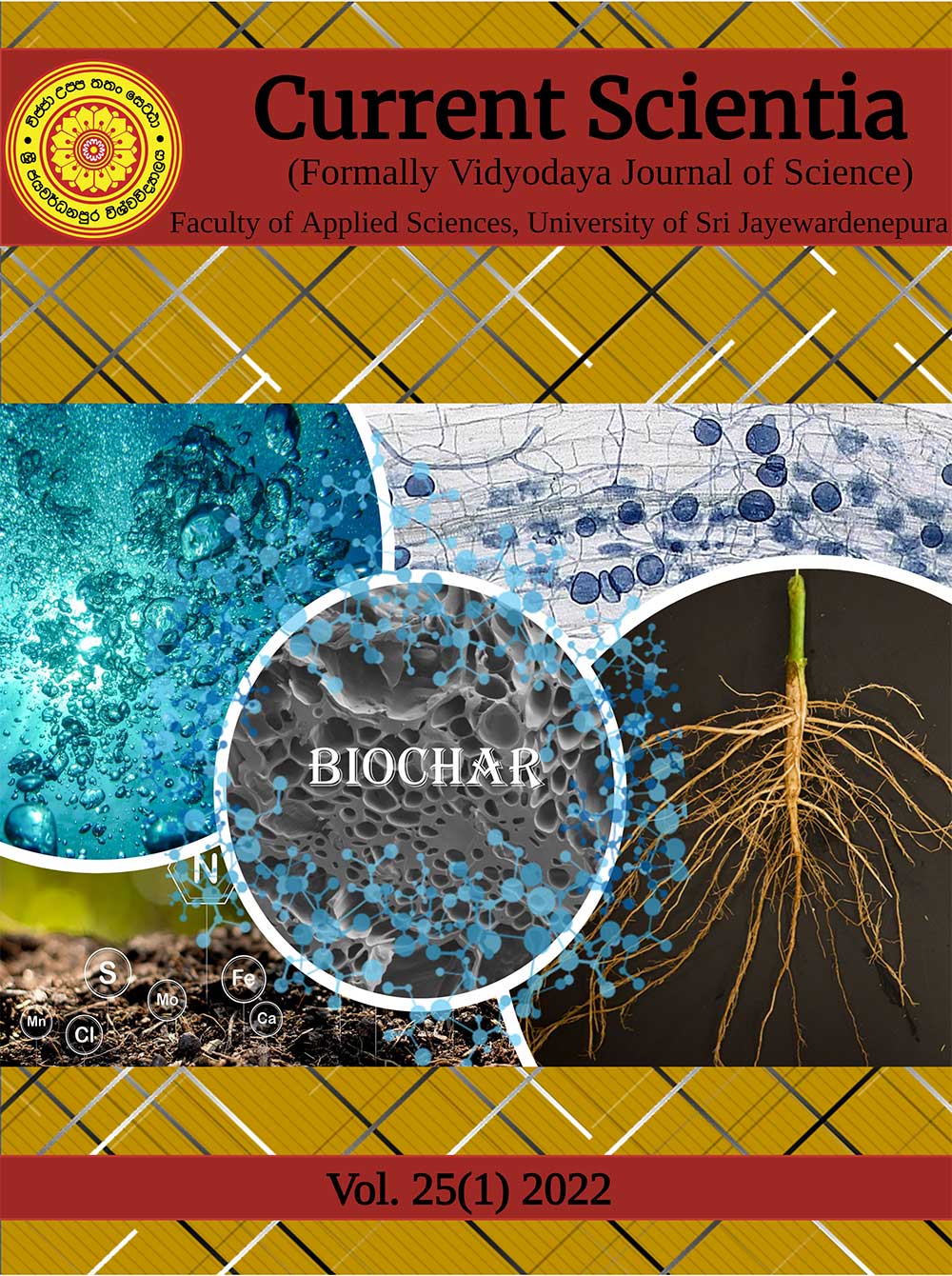A Preliminary Study on the Anti-dengue Viral Activity of Munronia pinnata
DOI:
https://doi.org/10.31357/vjs.v25i01.5925Abstract
Dengue infection is a major health care problem in tropical and subtropical countries. The recently approved dengue vaccine has limitations, and there is no antiviral drug for treatment at present.
For centuries plants and plant extracts have been used in traditional medicine for the treatment of various infections. The whole plant of Munronia pinnata, which has been used for treating fever patients in Sri Lankan traditional medicine, was tested for anti-dengue viral activity.
The cytotoxicity assay of M. pinnata on Vero cells using 4,5-dimethylthiazol-2-yl)-2,5-diphenyltetrazolium bromide (MTT) revealed Maximum Nontoxic Dose (MNTD) as 125 μg/ml and 50% cytotoxic concentration (CC50) as 428.9 ± 21.55 μg/ml. Plaque reduction antiviral assay performed on dengue-4 virus infected Vero cells demonstrated half-maximal inhibitory concentration (IC50) as 26.12 ± 0.91 μg/ml. The selectivity index (SI) of Dengue infection is a major health care problem in tropical and subtropical countries. The recently approved dengue vaccine has limitations, and there is no antiviral drug for treatment at present.
For centuries plants and plant extracts have been used in traditional medicine for the treatment of various infections. The whole plant of Munronia pinnata, which has been used for treating fever patients in Sri Lankan traditional medicine, was tested for anti-dengue viral activity.
The cytotoxicity assay of M. pinnata on Vero cells using 4,5-dimethylthiazol-2-yl)-2,5-diphenyltetrazolium bromide (MTT) revealed Maximum Nontoxic Dose (MNTD) as 125 μg/ml and 50% cytotoxic concentration (CC50) as 428.9 ± 21.55 μg/ml. Plaque reduction antiviral assay performed on dengue-4 virus infected Vero cells demonstrated half-maximal inhibitory concentration (IC50) as 26.12 ± 0.91 μg/ml. The selectivity index (SI) of M. pinnata was 16.42.
Based on the selectivity index, Munronia pinnata appears to be a viable candidate for identifying biologically active compounds with anti-dengue viral activity.
Keywords: Dengue, Munronia pinnata, Antiviral, Plaque reduction Assay, Vero Cells was 16.42.
Based on the selectivity index, Munronia pinnata appears to be a viable candidate for identifying biologically active compounds with anti-dengue viral activity.
Keywords: Dengue, Munronia pinnata, Antiviral, Plaque reduction Assay, Vero Cells




